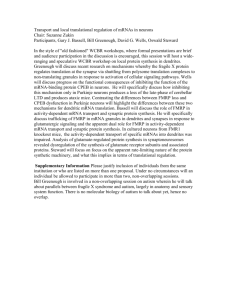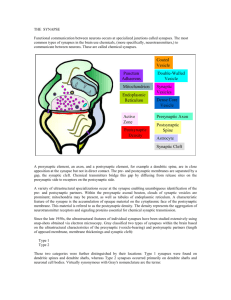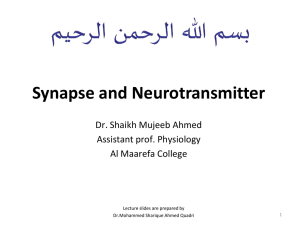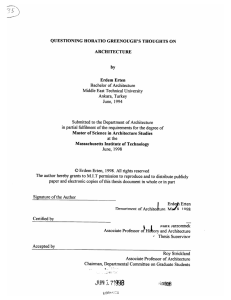Bill Greenough`s research career is exemplary of how the pursuit of
advertisement
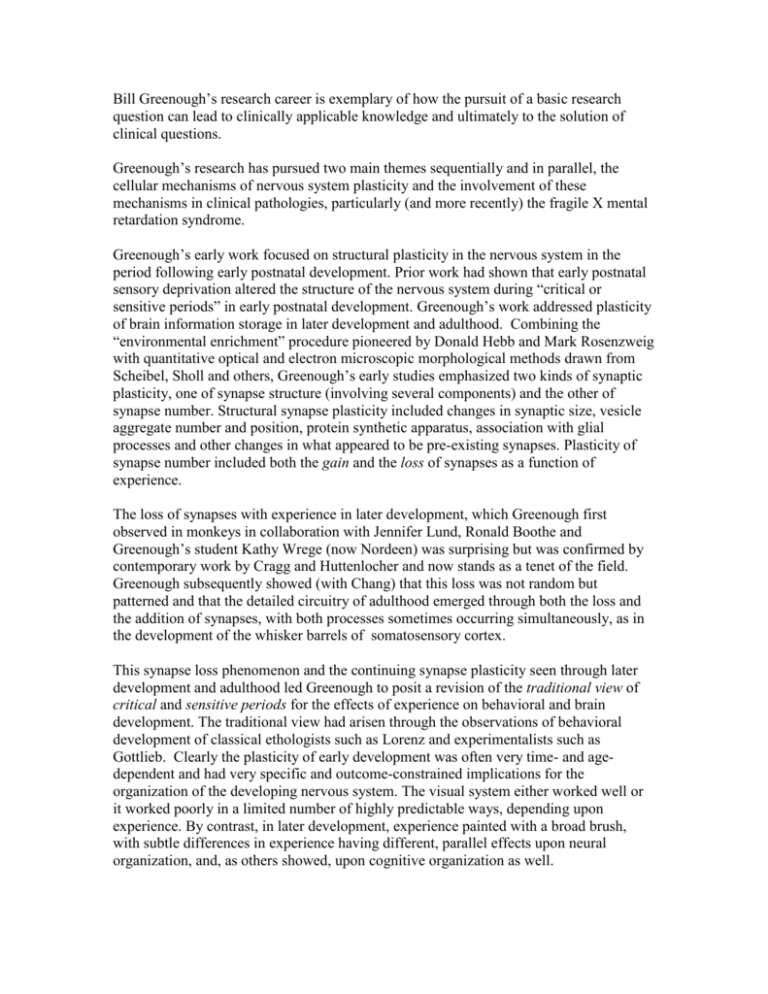
Bill Greenough’s research career is exemplary of how the pursuit of a basic research question can lead to clinically applicable knowledge and ultimately to the solution of clinical questions. Greenough’s research has pursued two main themes sequentially and in parallel, the cellular mechanisms of nervous system plasticity and the involvement of these mechanisms in clinical pathologies, particularly (and more recently) the fragile X mental retardation syndrome. Greenough’s early work focused on structural plasticity in the nervous system in the period following early postnatal development. Prior work had shown that early postnatal sensory deprivation altered the structure of the nervous system during “critical or sensitive periods” in early postnatal development. Greenough’s work addressed plasticity of brain information storage in later development and adulthood. Combining the “environmental enrichment” procedure pioneered by Donald Hebb and Mark Rosenzweig with quantitative optical and electron microscopic morphological methods drawn from Scheibel, Sholl and others, Greenough’s early studies emphasized two kinds of synaptic plasticity, one of synapse structure (involving several components) and the other of synapse number. Structural synapse plasticity included changes in synaptic size, vesicle aggregate number and position, protein synthetic apparatus, association with glial processes and other changes in what appeared to be pre-existing synapses. Plasticity of synapse number included both the gain and the loss of synapses as a function of experience. The loss of synapses with experience in later development, which Greenough first observed in monkeys in collaboration with Jennifer Lund, Ronald Boothe and Greenough’s student Kathy Wrege (now Nordeen) was surprising but was confirmed by contemporary work by Cragg and Huttenlocher and now stands as a tenet of the field. Greenough subsequently showed (with Chang) that this loss was not random but patterned and that the detailed circuitry of adulthood emerged through both the loss and the addition of synapses, with both processes sometimes occurring simultaneously, as in the development of the whisker barrels of somatosensory cortex. This synapse loss phenomenon and the continuing synapse plasticity seen through later development and adulthood led Greenough to posit a revision of the traditional view of critical and sensitive periods for the effects of experience on behavioral and brain development. The traditional view had arisen through the observations of behavioral development of classical ethologists such as Lorenz and experimentalists such as Gottlieb. Clearly the plasticity of early development was often very time- and agedependent and had very specific and outcome-constrained implications for the organization of the developing nervous system. The visual system either worked well or it worked poorly in a limited number of highly predictable ways, depending upon experience. By contrast, in later development, experience painted with a broad brush, with subtle differences in experience having different, parallel effects upon neural organization, and, as others showed, upon cognitive organization as well. To account for these seemingly disparate effects of experience during development, Greenough proposed the replacement of the critical and sensitive period conceptualizations with those of Experience-Expectant and Experience-Dependent information storage arising from contact with the environment. The ExperienceExpectant process was one in which the nervous system was set up to receive specific guiding or formative information at specific developmental points, such as patterned visual and acoustic experience, or somesthetic experience as studied in the whisker barrel system. Heree, as Hubel and Wiesel and many others were showing, synapse loss – the elimination of functionally inappropriate connections – was an important part of the emergence of patterned circuitry. By contrast, other effects of experience, such as those affecting cognitive function, were less time- and age-dependent and varied much more widely in their details across individuals. These Greenough described as ExperienceDependent, where the outcomes of developmental experiences were reflected in functional brain organization and behavioral competence but where the specific endpoints of development were defined by the multifaceted nature of experiences of the individual rather than by the need for specific experiences common to all members of the species. This conceptualization has had a broad impact in the field of child development and developmental psychobiology and a growing impact in neuroscience as scientists have increasingly begun to recognize the limitations of the simple critical-sensitive period view. The knowledge arising from this work also extended beyond their applications to brain and behavioral development. In a series of studies, Greenough demonstrated that many of the synaptic changes that occurred as a consequence of experience manipulations during development also occurred in specific functional systems with learning. Dendritic growth and synapse formation occurred in motor cortex with motor learning, for example, and were specific to the hemisphere involved when learning was restricted to one forelimb. Parallel specificity was seen in cerebellar paramedian lobule, and both cerebellum and motor cortex exhibited different responses to motor skill acquisition (e.g., synapse formation and modification) and to activation without learning, where, for example, capillaries were altered independently of synapses. Other changes in nonneuronal cellular compartments of the brain were less easily separated: glial envelopment of synapses seemed a necessary component of learning-induced synaptic plasticity or complex environment exposure, and such a basic phenomenon as myelination of axons was strongly affected by experiences such as exposure to an enriched environment, even in mature adult animals. These results reinforced a growing view that there was not a single cellular change, such as formation of new synapses or alteration of existing ones, that underlay adult long-term memories. That is, just as others had shown that different brain regions were associated with different kinds of memories, so too, multiple cellular changes were associated with the processes of long-term memory. Particularly important, the interactions of non-neuronal and neuronal elements appeared to be important parts of the process—memory did not seem to be an exclusive property of synapses. Greenough’s involvement in fragile X research arose as a consequence of these basic research approaches to developmental and adult information storage mechanisms. His group had discovered that protein synthesis at and near synapses, first examined by Steward, was enhanced by experience in animals housed in an enriched environment. It was at this point that Greenough and Eberwine first met—Jim gave a talk on the identification of dendrite specific mRNAs while visiting the University of Illinois, and, immediately following the talk, they devised a procedure to combine their approaches to identify which mRNAs were being translated in response to synaptic activation in a synaptoneurosome preparation that Greenough and then new colleague Ivan Jeanne Weiler had developed. When this procedure was implemented, the first protein identified as synthesized at or near synapses in this preparation was FMRP, the fragile X mental retardation protein. Synthesis of FMRP was increased at activated synapses. Subsequent to this Greenough and the Greenough-Eberwine-Weiler team have made very substantive contributions to the understanding of the roles of FMRP and the clinical syndrome associated with its absence, and the basic research techniques Greenough implemented for studying neural plasticity have been enormously valuable. Using quantitative neuroanatomy, Greenough and his group have described the principal neuropathologies associated with the disorder and have made a convincing case that they arise from a failure of the synaptic pruning mechanisms studied in his earlier work. Both the immature appearance of synapses and the greater numbers of synapses in the adult human and mouse model phenotypes appear to arise from the absence of a patterned synapse loss process, which is most evident in work on the somatosensory whisker barrel cortex of the mouse. Thus the syndrome seems to involve a relatively more nonselectively organized (or disorganized) nervous system, [suggesting the possible efficacy of treatments involving the building of ancillary circuitry, such as the extensive, repetitive training that does seem to have positive effects]. In molecular biological work, Greenough and colleagues have shown that protein synthesis at synapses is regulated by and very largely dependent upon the presence of FMRP. References: Psychology-Neuroscience: Richard F Thompson, PHD Univ Southern California Neurosci Program HNB 122 University Park Los Angeles CA 90089-2520 USA 213-740-7350 thompson@usc.edu Larry R Squire, PhD VA Med Ctr V116A 3350 La Jolla Village Dr San Diego CA 92161 USA 858-552-8585 ext.3628 Fax: 858-552-7457 LSquire@UCSD.edu James L McGaugh, PhD Univ California, Irvine Ctr Neurobiol Learning & Memory Irvine CA 92697 USA 949-824-5401 Fax: 949-824-2952 jlmcgaug@uci.edu Specific references regarding the impact of the work in the area of Child Development Research Charles A. Nelson, Ph.D. Director, Center for Neurobehavioral Development MMC#507 420 Delaware St. SE University of Minnesota Minneapolis, MN 55455 canelson@umn.edu (612) 624-3878 (office) FAX: 612-625-1530 Bruce Pennington Also, you might contact Suzanne Wandersman at the American Psychological Association. She would have, I believe, handled my materials with regard to the APA Distinguished Scientific Contribution Award several years ago. The letters would be way out of date (probably gone except I have the feeling that APA never throws anything away), but the names might include ones I haven’t thought of. Suzanne Wandersman Director for Governance Affairs Science Directorate American Psychological Association 750 First Street, NE Washington, DC 20002-4242 (202) 336-6000 (202) 336-5953 FAX swandersman@apa.org Cell Biology-Fragile X Question marks indicate that the individual never has written a letter for me so far as I know, and, while I assume they are familiar with the work, I cannot be sure of their opinion of it. Oswald Steward, PhD Col Med Univ California Irvine Dir, Reeve-Irvine Res Ctr 1105 Gillespie Neurosci Res Facility Irvine CA 92697-4292 USA 949-824-8908 Fax: 949-824-2625 osteward@uci.edu Edouard W. Khandjian (Hasn’t written but knows work) Unite de Recherche en Genetique Humaine et Moleculaire Centre de Recherche Hopital Saint-Francois d'Assise Centre Hospitalier Universitaire de Quebec Quebec, QC, Canada G1L 3L5 direct: 418 525 4444 (ext. 3484) Fax: 418 525 4195 edward.khandjian@crsfa.ulaval.ca ?Rusty (Fred H.) Gage , PhD – Salk Inst Lab Genetics 10010 N Torrey Pines Rd La Jolla CA 92037 USA 858-453-4100 ext.1012 Fax: 858-597-0824 gage@salk.edu ?Andre Hoogeveen Department of Clinical Genetics Erasmus University Rotterdam, The Netherlands hoogeveen@ikg.fgg.eur.nl ?Ben A. Oostra Department of Clinical Genetics Erasmus University Rotterdam, The Netherlands b.oostra@erasmusmc.nl


